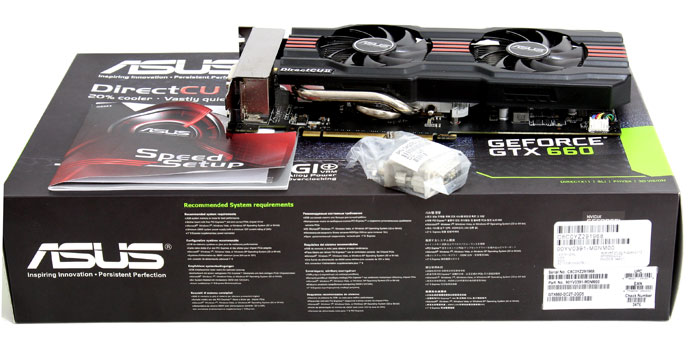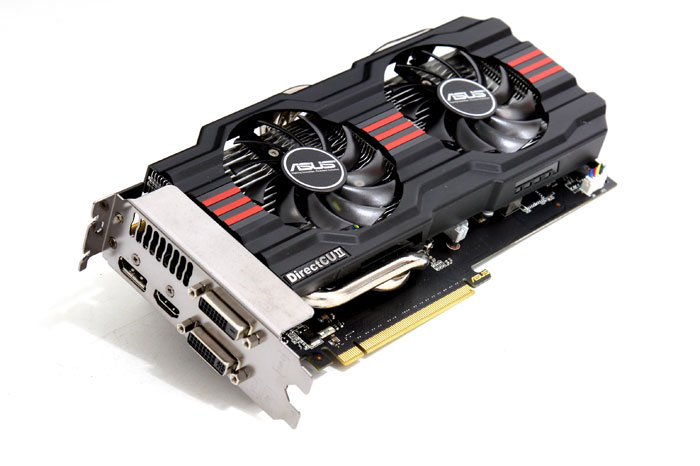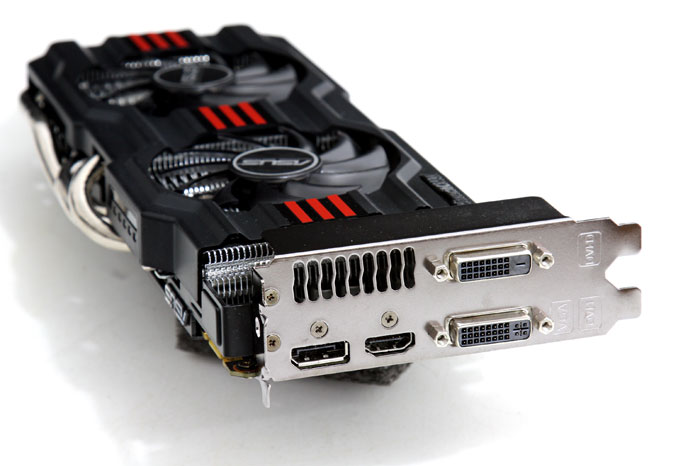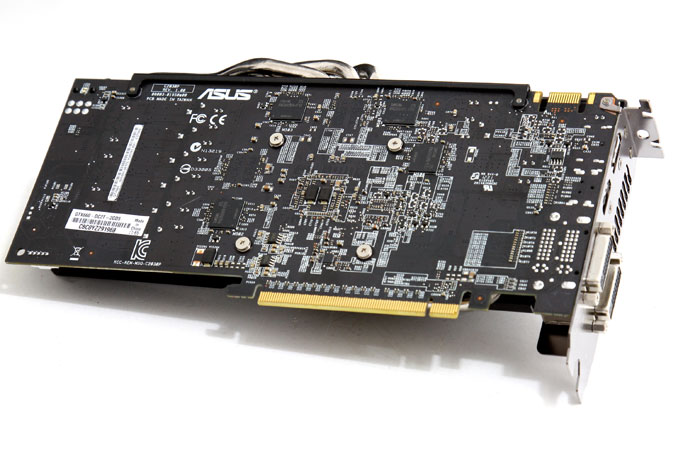Product Showcase
Product Showcase ASUS DirectCU II TOP
ASUS has an offering that you'll recognize immediately, they released the product with their popular DirectCU II cooler, an all black PCB, Tier 1 memory, Japanese Solid Capacitors and ferrite core / metal chokes -- the good stuffz alright.
You'll notice that the SKU is tagged under codename GTX660-DC2T-2GD5. As you know already, this TOP model is the factory overclocked model. It runs at a core clock frequency of 1072 MHz, has a boost frequency of 1137 MHz and the effective memory data rate (192-bit) is 6108 MHz. That immediately makes this the fastest clock product in today's tests.
Let's have a look at some photo's.

Alright, here we have the GeForce GTX660-DC2T-2GD5 (TOP edition), the 2GB SKU (stock keeping unit) and its packaging. Overall a nice dark looking card some red tones. Let's look at the card from several different viewpoints.

The card is equipped with the GK106 GPU that harbors the Kepler GPU architecture. You get the basics like the graphics card, PEG converter cables, manual and a demo and driver CD, though bundles will vary with AIB/AIC partners.
ASUS clocks this OC model card at a 1072 MHz baseclock, a 1137 MHz Boost/Turbo clock and the memory is running at 6108 MHz. This factory tweak positions the card at the performance level of a GeForce GTX 660 Ti. Mind you that the reference baseclock is 980 MHz, so that's quite a nice factory clock right there.

The card will come with two GB of graphics memory, which is definitely enough if you are a hardcore gamer with a monitor resolution of 1920x1200 and plenty for a product in this price range. Should you opt multiple monitors and SLI, a future 3GB version could be something the AIC partners will develop.
ASUS gives the card two DVI connectors (dual-link), one HDMI and a DisplayPort connector (full size).

And as you can see there is little room left on the PCB to increase memory though. The card is PCIe gen 3.0 compatible. Going from PCIe Gen 2 to Gen 3 doubles the bandwidth available to the add-on cards installed, from 500 MB/s per lane to 1 GB/s per lane. ASUS definitely is using their own customized PCB alright.
You can see one SLI connectors, the 660 (non-Ti) series is allowed to work with up to two cards in SLI mode. For proper scaling and little driver issues as possible we always recommend to stick to 2 cards in multi-GPU mode anyway. We'll show you SLI results in our article of course.

